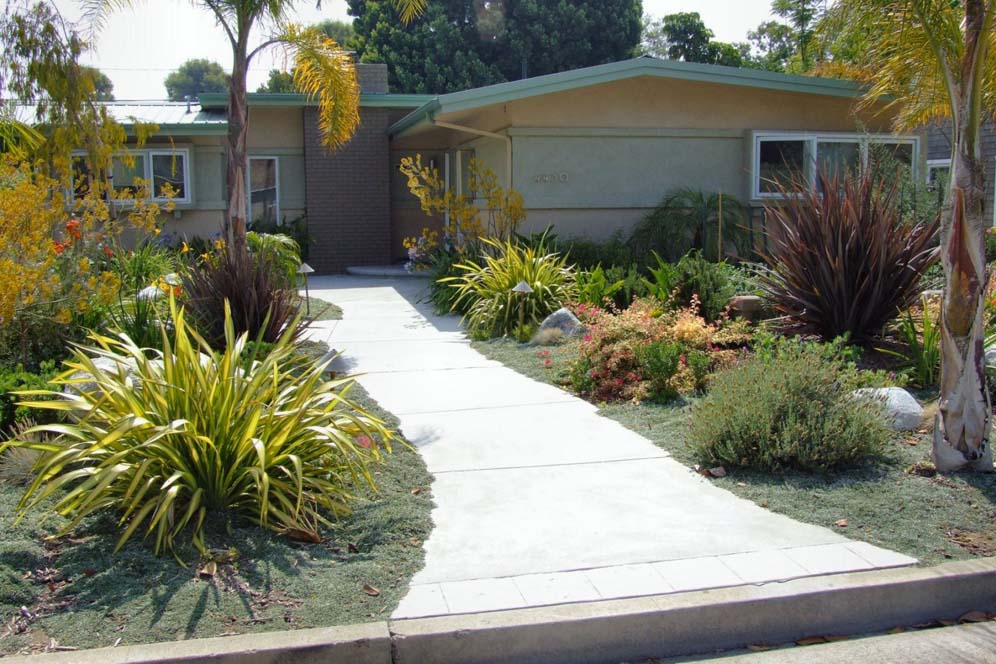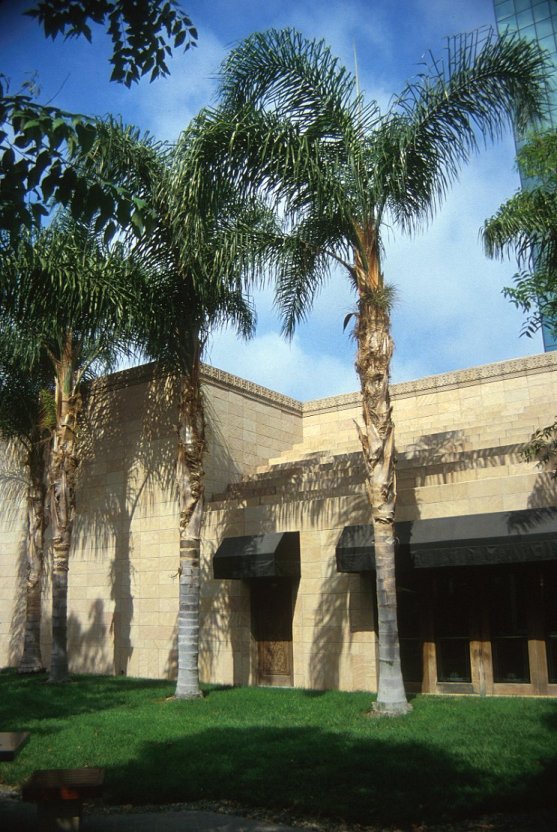
Common name:Queen Palm
Botanical name:Syagrus romanzoffianum
This palm has a very straight trunk to about 50' in height. It has arching, feathery, bright green, glossy leaves that can be 10'-15' long. It is fragile in heavy winds and a fast grower. It will become damaged in temperature below 24 degrees F.
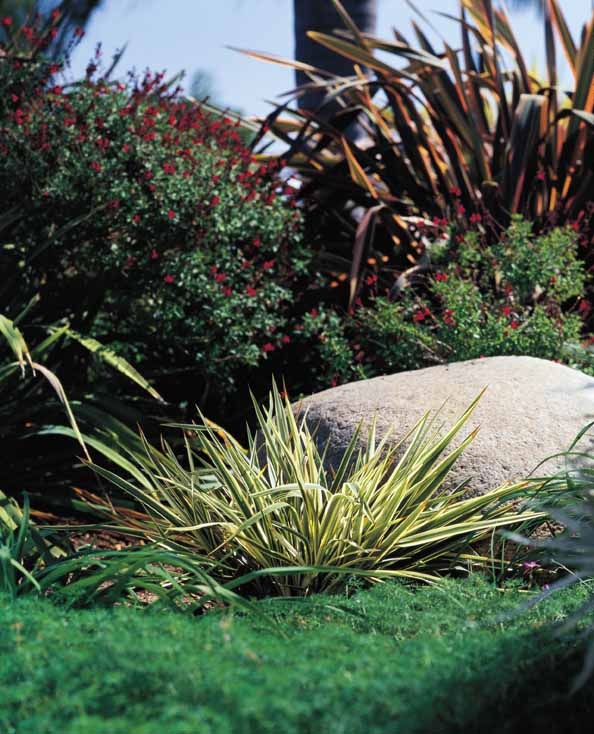
Common name:New Zealand Flax, Wings of Gold
Botanical name:Phormium 'Wings of Gold'
The Phormium is a dwarf, growing to only 2'-3' tall. The stiff, vertical leaves are olive green in color with a yellow margin. It should be grown under full to part sun.
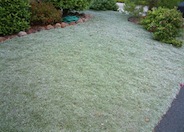
Common name:Dymondia, Rock Ditty
Botanical name:Dymondia margaretae
This foliage is gray/green/silvery; it is a very dense, mat forming ground cover. It tolerates drought, cold, salt spray and poor soils. It's deep rooted and produces small, inconspicuous yellow flowers. Rock Ditty is great for use in between stepping stones or pavers.
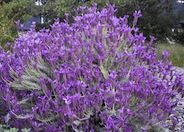
Common name:Spanish Lavender
Botanical name:Lavandula stoechas
This dense shrub grows 2'-3' tall with blue gray foliage and deep purple flowers that have large showy bracts near the top of the spikes. It is drought tolerant .
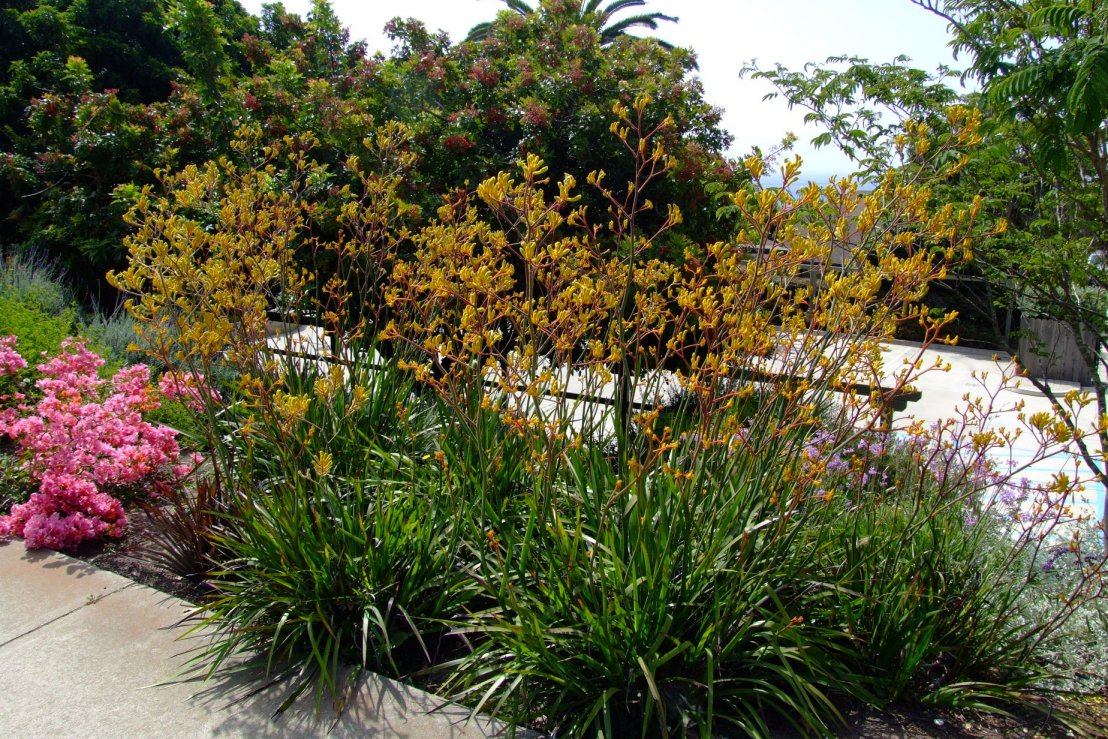
Common name:Kangaroo Paw 'Yellow'
Botanical name:Anigozanthos 'Yellow'
This herbaceous perennial can reach 4'-6' tall and 2'-3' wide. Kangaroo Paw has strap-like leaves and fuzzy tubular-shaped, yellow flowers that bloom in spring and fade as summer progresses. They can be used for cut or dried flowers. The flowers have nectar which attract hummingbirds. Kangaroo Paw does well in full sun and looks great in borders, mass plantings, and in pots. It can do well in drought tolerant conditions. It prefers sandy soil and deep, infrequent watering.
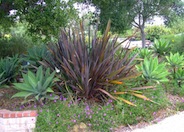
Common name:New Zealand Flax, Purple
Botanical name:Phormium tenax 'Atropurpureum'
Phormium tenax 'Atropurpureum' is an evergreen perennial. Big, dramatic plant composed of many swordlike, stiffly vertical leaves can reach 5' tall. Leaves are purple red. Flowers stems reach high above leaves, bearing clusters of 1"-2" blossoms in dark red.
| Designer: Barbara Paul | Walkway of Discovery |
Photographer: GardenSoft |
Soils and Compost:
Incorporate compost 6" into your soil to retain water, reduce compaction, feed earthworms, and provide valuable nutrients to your plants.
Water Saving Tip:
Mulching and adding compost to soil can minimize evaporation and help soil absorb and store water.
Integrated Pest Management:
Develop healthy soil for plants that are vigorous and naturally pest-resistant.
